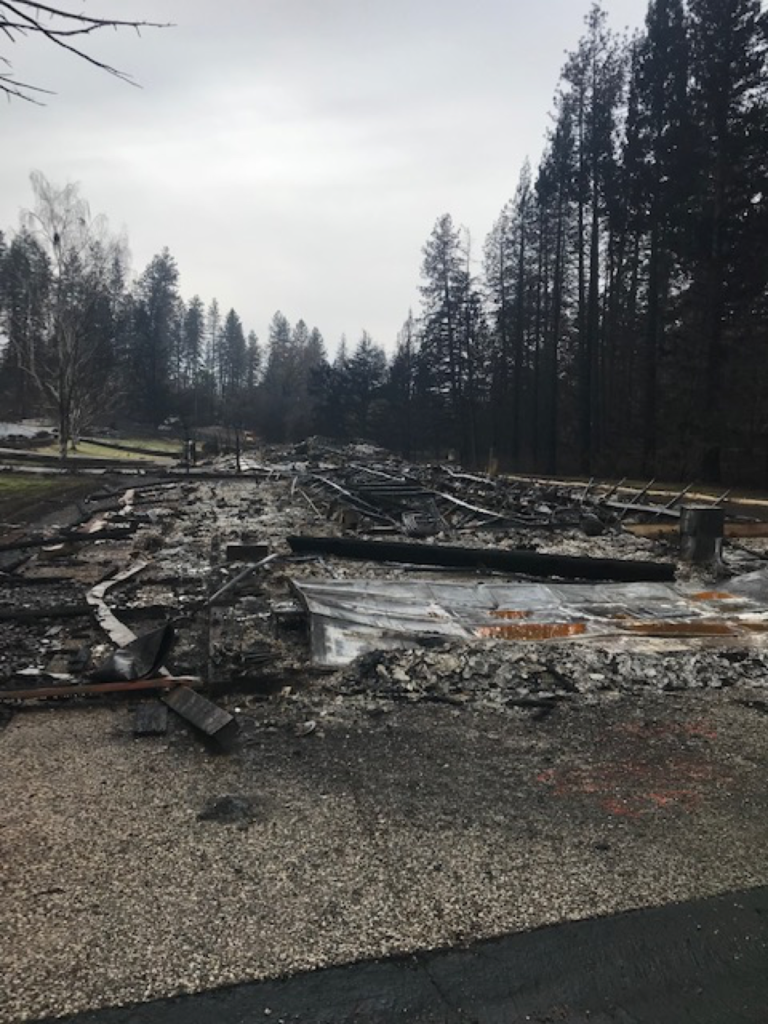November Great Story by Sarah Risher, 2018-19 Sacramento and Sierra Climate Fellow
It started raining as we drove into Paradise. In place of traffic lights and stop signs, National Guards directed the vehicles coming in and out of the incinerated town. The roads were lined with crews tagging and removing trees that posed any risk of falling. Not even a mile into town, we, a team of engineers, a grant specialist, and a CivicSpark Fellow, turned into a cul de sac to meet with a team of engineers, a geologist, and a biologist.
Upon getting out of the car, we huddled into a circle for introductions, safety protocol, and an overview of our day. Throughout the conversation, my gaze shifted to the hills and structures that surrounded us. The hills were spotted with collapsed and leaning trees, and the soil was totally exposed. The building walls were caved in, covered by a roof that was broken into a million little burnt pieces. After ten or fifteen minutes, we climb back into our vehicles to tour the town, bringing me back to the purpose of being in Paradise. We were there to identify and visit high priority sites located near a waterbody as well as determine next steps in the recovery process. Due to the densities and proximity to downstream flow, the majority of the sites we went to were mobile home parks.
Prior to the trip I thought I was prepared for what I would experience. Being born into the era of climate crisis, I thought I knew what destruction looked like, watching disasters devastate various parts of the world – one if not more for nearly every year of my life – each time increasing in magnitude. But as I stood amid all the destruction with toxic smokey air filling my nose and lungs, I realized I wasn’t. No amount of news coverage compares to seeing the devastation first hand. And being there first hand will never compare to being someone who lost their home and/or a loved one.
We walked from the top of a mobile home park down to the bottom of the slope, following the stream flow. At the bottom of the slope were filter socks, which are used to clean the water of contaminants as it continues downstream. As we looked back up at all the destroyed properties, one of the engineers shared this site is where they found many of the deceased. My heart stopped as he shared many of these residents were elderly folks found in their beds and bathtubs, either unable or didn’t know to evacuate. This moment plays over in my mind, each time my heart breaking for the lives lost and all the people and animals impacted by the Camp Fire’s deadly blaze, and each time reminding me why climate adaptation is the work I do.

